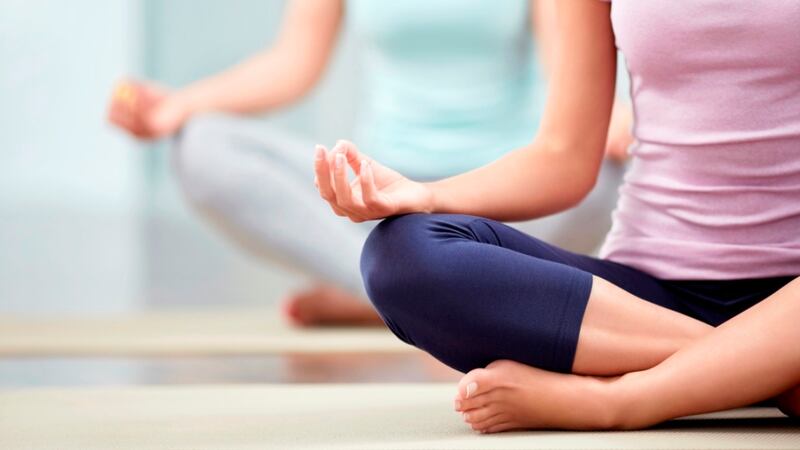Yoga helps the body recover from the stress of running, allowing people to continue doing the sport they love, whatever their age, writes SHANE HEGARTY
In the search for better core strength and flexibility, runners – in common with other athletes – have increasingly looked towards yoga and pilates for answers. It’s become enough of a trend that there are now specific yoga for runners classes around the country.
Kanta Barrios, who teaches a course in Dublin, answers questions on the benefits of sitting down and stretching, when what you plan to do is get up and run.

Why can yoga benefit runners?
“Most vigorous training, sport or exercise programmes can put a lot of strain on the body. When you are a young athlete, the body will restore faster and bounce back from an injury much quicker; but as we age, repetitive stress and injuries will force someone to stop running or playing the sport they love. This can be prevented with yoga practice.
“Yoga helps with musculoskeletal imbalances that lead to chronic injuries. It can prevent and heal muscle pulls, inflamed tendons, release lactic acid from muscle tissue, joint stress, back pain and many other common consequences of a vigorous training programme.
“A yoga practice, done with mindfulness and good alignment, will integrate the entire body and restore balance. Physically, yoga strengthens weak muscles and lengthens tight ones. With practice it helps develop an understanding of how the body works, and it allows you to listen to the signals that it sends you.”
Is there a very specific type of yoga suitable for runners?
“Yes, alignment-based yoga. The long-term benefit of yoga comes from a practice that helps the student cultivate awareness, that teaches right alignment and skill to help them support and take care of the body.
“Look for a yoga class and instruction that focuses on teaching good alignment and how to create balanced action between strength and flexibility. Yoga should help cultivate sensitivity and awareness for the body.
“You want yoga to have a therapeutic effect, to help nourish and restore the body. Good yoga therapeutics is basically good alignment. When the body comes into good alignment, the connective tissue becomes stronger and more resilient and you increase circulation and flexibility. The body is able to move in a harmonious flow.
“There is a set of simple principles of alignment to learn and practise in yoga. Learning these principles and how to apply them protect and heal the body.”
How quickly can those benefits be seen?
“You will feel the benefit immediately after the first yoga session. People usually feel lighter, with their bodies open, more at ease and even in a better mood after practice. But after a run, or even after sitting at a desk all day long, the body will go back to old patterns and feel stiff again. Students who are athletes, who maintain a regular practice, start to see long-term benefits and changes in their bodies within four to six weeks.
“Truth is that yoga is a practice that will support you at any stage of life. When you are young, in your 20s, the body repairs faster from strain. But once you are in your 30s and 40s, tight muscles get tighter and others get weaker, this imbalance inevitably leads to chronic pain and injury. Pain will stop you from doing what you love long term. Long-term yoga practice can bring the body into balance so that you can continue to run and do sport for many years to come.”
Is it something people can do at home as well as in a class?
“Absolutely. Once you know what to do, the only thing you need to practise yoga is your body. Eventually most people continue with a home practice and incorporate yoga into their daily exercise.”
Do you recommend people replace a running session with yoga, or do it in conjunction with their running programme?
“It might be good to replace an easy run day with a yoga session. This will give the body and muscles the opportunity to restore. A longer yoga practice will allow you to go deeper, and work on the tighter muscles and weaker areas. It will also give you the opportunity to gain ‘body wisdom’ – learn how the body works and how to take care of it by spotting the source of the imbalance or strain. This is a skill that comes with practise.
“Ideally, you want to incorporate some yoga within each training session. For example, start to incorporate yoga in the warm-up and cool-down of your programme. The beauty is that the technique you learn in yoga and the principles of alignment can be applied to any stretch to make it efficient.”
What are some basic positions that you recommend?
“I would focus on poses that lengthen leg muscles, series of hamstring, quads and calf muscle stretches. Hip openers are important and core strength is essential.
“In general, standing yoga poses are a great way to start. They build strength and it’s easier to access tight leg muscles and hips. A good yoga pose will integrate all of the different body parts together in balanced action. You engage and extend the body as one.
Kanta Barrios's Yoga Fundamentals Course for runners, kantabarriosyoga.com
















